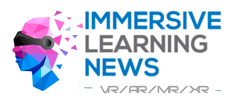AR’s application remains concentrated in disciplines requiring high degrees of experiential learning, particularly health sciences and engineering. These fields benefit from AR’s visual and interactive affordances, enabling simulations for procedures, design modeling, and problem-solving. In contrast, language and mathematics courses show limited adoption, likely due to a mismatch between AR’s primarily visual-interactive nature and the abstract or text-heavy cognitive demands of these disciplines.
Augmented Reality (AR) is no longer just a buzzword in tech circles; it has taken root in classrooms, labs, and digital platforms across global universities. As higher education seeks immersive technologies to enhance learning, a comprehensive systematic review and meta-analysis sheds light on how effectively AR has been deployed across disciplines over the past two decades.
The study, “Augmented Reality in Higher Education: A Systematic Review and Meta-Analysis of the Literature from 2000 to 2023,” published in Education Sciences, analyzed 237 peer-reviewed articles and conducted a meta-analysis of 60 experimental studies. It offers a deep dive into AR’s application trends, pedagogical integration, technological characteristics, and learning impact in higher education environments worldwide.
What are the trends in AR usage across disciplines?
According to the review, interest in AR-supported instruction in higher education rose sharply after 2015, with two significant peaks in 2015 and 2020. These correspond to key tech milestones like the launch of Google Glass and the commercialization of Oculus headsets, which catalyzed broader adoption of immersive tools in educational settings.
AR’s application remains concentrated in disciplines requiring high degrees of experiential learning, particularly health sciences and engineering. These fields benefit from AR’s visual and interactive affordances, enabling simulations for procedures, design modeling, and problem-solving. In contrast, language and mathematics courses show limited adoption, likely due to a mismatch between AR’s primarily visual-interactive nature and the abstract or text-heavy cognitive demands of these disciplines.
Despite AR’s proven potential, there’s a notable disparity in deployment across subject areas. While medical training, mechanical engineering, and architecture actively integrate AR tools, humanities and language-based programs have yet to establish compatible instructional models that utilize AR’s strengths effectively.
How is AR being used and what are its educational functions?
The study categorizes AR’s technical integration into three core input methods, natural (e.g., voice or motion) and artificial (e.g., scans or stylus), with QR code scanning being the dominant interaction mode from 2012 onward. The most common outputs were video see-through devices like mobile phones and tablets, overtaking traditional monitor-based systems due to their flexibility and improved ergonomics.
Media representations are central to AR’s utility in education. The most frequently used formats are 3D objects, providing intuitive, manipulable visuals particularly suited for anatomy, mechanical systems, and architectural structures. 2D images and text follow as secondary modalities.
Instructionally, the majority of AR use cases still center on content delivery, which made up over half of all implementations. AR allows virtual objects to overlay real environments, offering enriched visual support. A significant number of studies also explored AR for practice-based learning, such as surgical simulations and programming problem-solving. Other applications include engagement tools and attention grabbers, though these functions are often secondary or combined with core teaching purposes.
In terms of pedagogy, direct instruction dominates, accounting for 44% of approaches. This includes presenting procedural content such as code execution, structural transformations, and simulated lab procedures. Other pedagogical models like inquiry-based, experiential, and game-based learning are used to a lesser extent. Collaborative and trial-and-error strategies remain underrepresented, highlighting an untapped potential for learner-driven, constructivist applications of AR.
How effective is AR-based instruction in higher education?
The meta-analysis portion of the study reveals a large overall effect size (g = 0.896), confirming AR’s strong impact on learning outcomes. The effect was most pronounced in practical or skills-based disciplines and least effective in language learning settings. The most influential moderating factors were instructional function and learning outcome type.
When used for content delivery, AR showed the greatest efficacy, while applications designed to simply grab learner attention yielded the smallest effect. Among outcome types, AR had the largest impact on skills development, followed by knowledge acquisition and affective outcomes (like motivation and engagement). However, the improvement in learner capacity, defined as higher-order abilities like computational or spatial reasoning, was relatively modest. This could be due to the short-term nature of many studies and the difficulty in measuring long-term capacity gains.
Interestingly, the analysis found no significant differences based on input/output type or disciplinary field, suggesting that AR’s learning benefits are broadly applicable, provided that appropriate instructional strategies are used. However, studies using direct instruction and game-based learning showed greater effect sizes compared to those utilizing collaborative or inquiry-based approaches.
Quelle:


